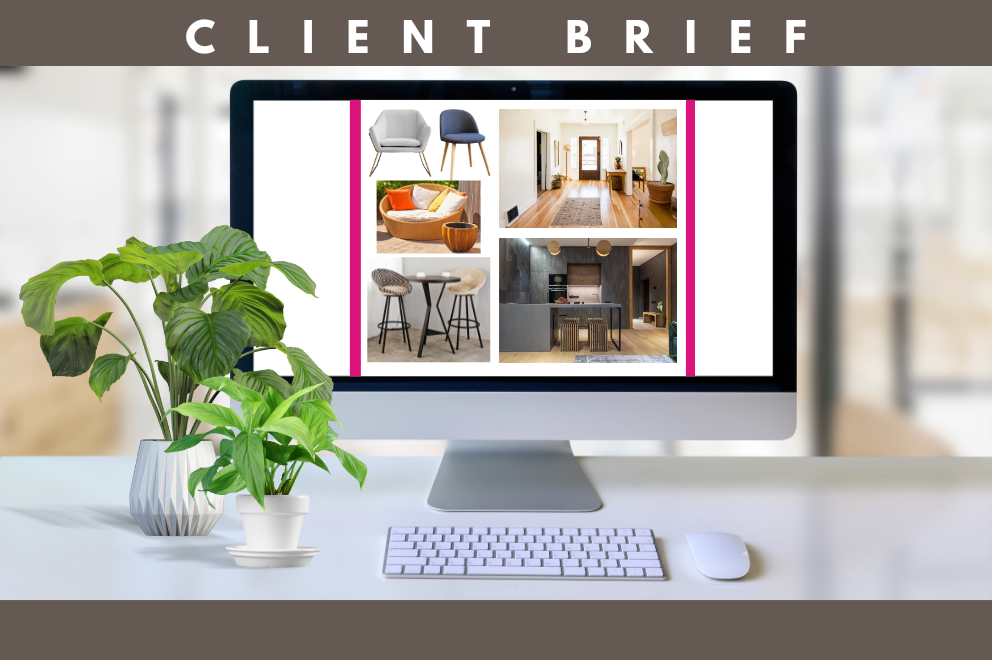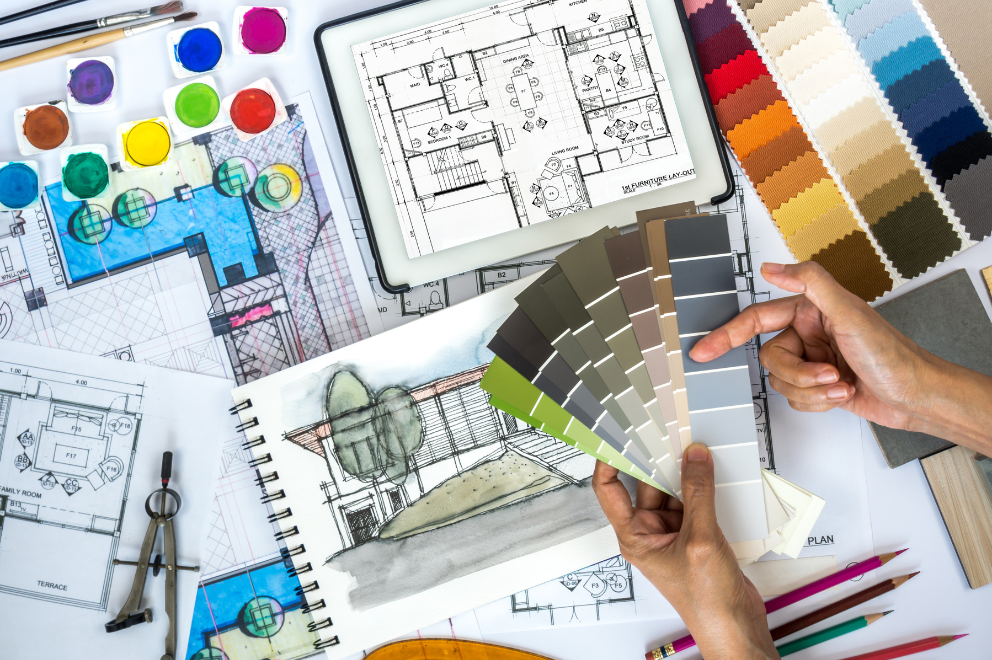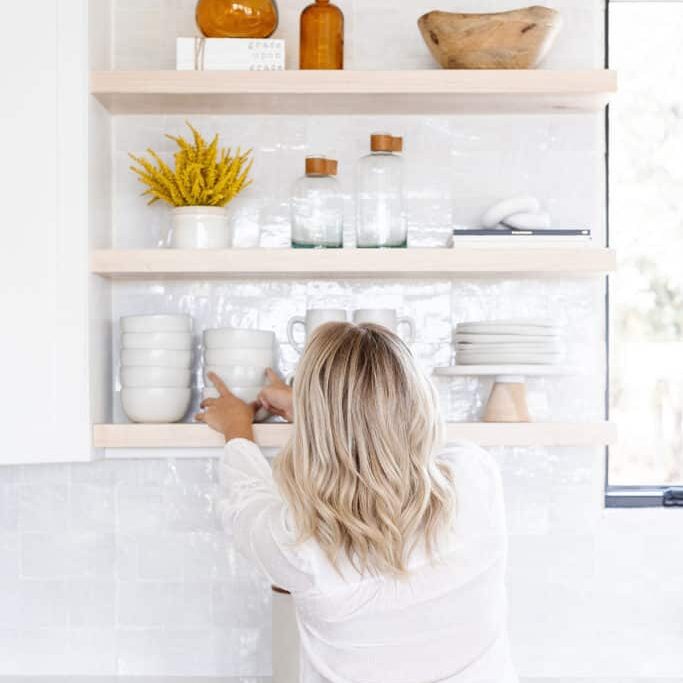
When starting an interior design project one of the most important things we overlook is the interior design brief.
This document is the foundation for a good working relationship between homeowners and designers, so the end result is what the client wants and needs.
In this post we will go into the world of interior design briefs, what’s important, and how to create and write one.

An interior design brief is a comprehensive document that outlines the goals, requirements, and vision for an interior design project. It serves as a roadmap for the design process, providing structure, guidance, and direction to the project. An interior design brief should include:
Creating a well-structured interior design brief is crucial for ensuring that the final design aligns with the client’s vision. It helps minimize the risk of miscommunication and ensures that the project runs smoothly and efficiently. The brief should be a collaborative effort between the designer and the client, with input from key stakeholders and end-users to capture their true vision and needs.

An interior design brief is a crucial document that serves as the foundation for a successful interior design project. It provides structure, guidance, and direction to the design process, ensuring that the final outcome aligns with the client’s vision and requirements.
The brief sets out clear objectives, priorities, and expectations for the project. By describing the look, feel, and functionality of the space it gives the design team a roadmap to follow so everyone is on the same page.
A well-written brief facilitates effective communication between the client and the design team. It allows the client to articulate their vision clearly while enabling the designers to understand and interpret their requirements accurately.
The brief serves as a reference point throughout the design process, helping to guide decision-making. It ensures that every design choice is made with the project’s objectives in mind, reducing the likelihood of costly mistakes or deviations from the original vision.
By establishing a clear timeline and budget, the brief helps keep the project on track and ensures timely delivery. It allows the design team to plan and allocate resources effectively, minimizing delays and unexpected costs.
The brief encourages the consideration of practical aspects such as usage, sustainability, and the needs of the people who will inhabit the space. This helps create a design that is not only aesthetically pleasing but also functional and tailored to the users’ requirements.
Writing an interior design project brief is a critical step in ensuring that your design project aligns with your vision and meets your needs. A well-structured brief helps communicate your expectations clearly to the designer, minimizing misunderstandings and enhancing the overall design process. Here’s a step-by-step outline on how to write an effective interior design project brief:
First, define the objectives of the project. What do you want to achieve with this design? What will the space be used for, what’s the vibe and what problems does it need to solve? Have a chat with the client and capture their vision in their own words, this will give you valuable insight into their likes and dislikes.
Describe the space to be designed. Include dimensions, existing features and any architectural elements that need to be considered. If you have them, attach floor plans or sketches so the designer can get a better understanding of the layout and space constraints.
List the specific requirements of the project, including number of rooms, types of spaces (e.g. bedrooms, offices, living areas), and any specific functionalities. Discuss the client’s likes and dislikes on materials, colors, furniture, and styles. This section should capture the essence of what the client wants for the space.
If applicable, who will be using the space? Understanding the demographics and needs of the users (whether it’s a family, office staff or guests) will help you design for their lifestyle and preferences. Consider age, interests, and how they will use the space.
Set a budget for the project. This should break down the costs for materials, labor, and furniture. Having a budget will help the designer make informed decisions and keep the project financially viable.
Create a realistic timeline for the project, including milestones and deadlines for deliverables. When do you want the design process to start and when will it be finished. This will manage expectations and keep the project on track.
Include visual references that match the client’s vision. This could be images from magazines, websites or mood boards that show the desired style, color, and materials. Visuals will help with communication and give a clearer understanding of what the client likes.
Once you have all the information, categorize the content into sections. Use headings and bullet points for clarity so the brief is easy to follow. A structured brief will help with understanding and be a useful reference throughout the project.
Before finalizing the brief, review it with the client to make sure it matches their vision and requirements. Ask for feedback and make any necessary changes to address any concerns or new insights. This will keep the client involved and invested in the project.
By following these steps, you can create a comprehensive interior design project brief that effectively communicates the client’s vision and sets the stage for a successful design process.

A design brief is key to any design project, it’s the foundation document that guides the whole process. It ensures the client and designer are on the same page with their expectations and objectives and ultimately leads to a better outcome.
The design brief helps clarify the client’s vision and objectives for the project. By stating what they want to achieve, clients can give designers clear guidelines on what they want the space to look, feel, and function like. This clarity means the final design will more likely meet the client’s expectations as designers can focus on the specific goals outlined in the brief.
The brief provides the designers with the information to make informed decisions on materials, layouts, and furniture. With a clear understanding of the client’s budget, timeline, and specific requirements designers can propose solutions that are not only beautiful but practical and feasible within the given constraints. This structured approach minimizes the risk of costly mistakes or changes down the line.
Having a full interior design brief streamlines the design process by outlining the project scope, responsibilities, and timelines. It sets a realistic schedule and budget so the design team can allocate resources.
An interior design brief considers the needs and preferences of the people who will be using the space. By understanding the demographics, lifestyle, and activities of the users designers can create spaces that are beautiful and functional, and comfortable. This user experience is key to the space doing what it’s meant to do and improving the lives of its occupants.
The level of detail in an interior design brief will vary depending on the project. But it should be enough to give the designer clear direction. Include specifics, likes and dislikes, and constraints, and leave room for creativity. Aim for a balance between detail and flexibility so the designer can come up with innovative solutions that fit the client’s vision.
Creating an interior design brief should be a collaborative process between the client, the interior designer, and any other stakeholders. This may be family members, business partners, or facility managers depending on the project. Having multiple perspectives will ensure the brief captures all the necessary information and requirements and will lead to a better design outcome.
Yes, clients can write their own interior design briefs. But it’s good to work closely with the designer throughout the process. Discussing likes, lifestyle, and specific needs will ensure the brief captures the client’s true vision. Using templates or examples will also give you an idea of what to include and how to structure the document.
If you’re not sure what you want in your interior design brief start by reflecting on your lifestyle, likes, and any inspirations you may have. Visit design showrooms, browse online platforms like Pinterest, or look through design magazines to get ideas. You can also talk to your designer who can guide you through the process of identifying your needs and likes and help you articulate your vision better.
A thoughtfully constructed interior design brief is the cornerstone of any successful design endeavor, paving the way for creativity and innovation while ensuring that the final result aligns perfectly with the client’s aspirations.

James Sullivan, an architect with a degree from the University of Texas, has focused on sustainable beach house designs since 2013. He joined our team in 2020, weaving his expertise into articles that emphasize harmony with nature. James enjoys scuba diving during his weekends.

Hi there! I’m Aisha Harper. With a background in exploring breathtaking destinations and a deep appreciation for creating warm, inviting spaces, I’ve combined my passion for adventure and home into a fulfilling career. From scaling mountains to styling living rooms, I love blending the thrill of the outdoors with the comfort of home, inspiring others to do the same.